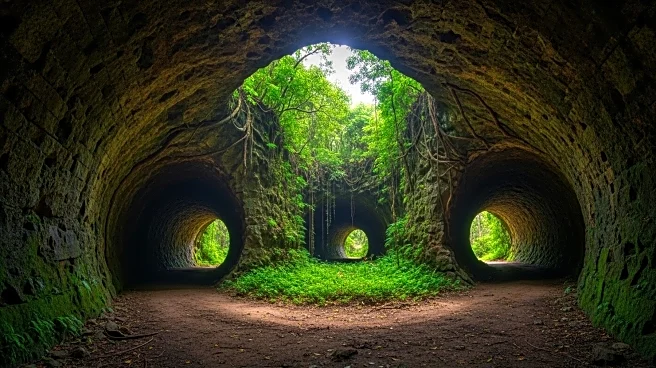What's Happening?
Researchers have uncovered massive underground tunnels in Brazil and Argentina, believed to be created by extinct megafauna such as giant ground sloths. These tunnels, known as paleoburrows, are extensive and feature claw marks, suggesting they were dug by these prehistoric animals. The discovery challenges previous assumptions about prehistoric environments and highlights the role of megafauna as ecosystem engineers.
Why It's Important?
The identification of these tunnels as paleoburrows represents a significant shift in understanding prehistoric life and environments. It suggests that extinct megafauna played a more active role in shaping their habitats than previously thought. This discovery could lead to new insights into the behavior and ecological impact of these animals, as well as their interactions with early humans.
Beyond the Headlines
The discovery prompts questions about other potential megafaunal structures and their implications for understanding human migration and faunal extinction events. It also highlights the need for interdisciplinary research to uncover and interpret such findings, combining geology, paleontology, and archaeology.












